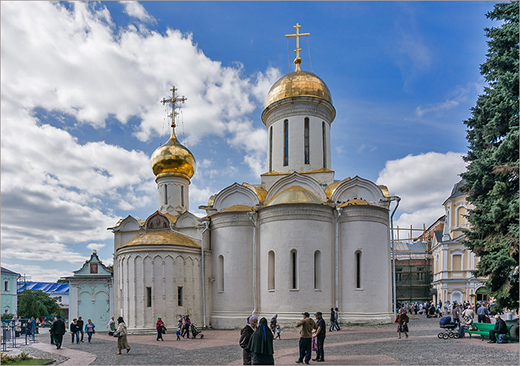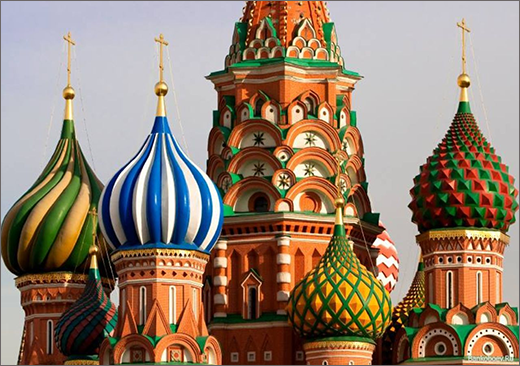Armoury chamber

Monomakh's Cap
The life of the monarch was closely linked with religious ceremonies. Icons in lavishly decorated frames, gem-adorned covers for gospels, Holy Communion sets made of precious metals, and pearl-embroidered vestments for high clergy were all essential to the monarchy.
The coronation ceremony for the rulers was held in the main cathedral of the Moscow Kremlin when the future sovereign would be blessed

The ivory-palted throne of Ivan the Terrible
Peter the Great is a dominating force in Russian history. Military and civil orders, new items of tableware (tea and coffee sets), and even men and women’s fashions were taken from Europe because of his influence. Even the coronation dress of Catherine I, Peter's wife, was subject to these innovations - short sleeves, a low-cut neckline, a narrowed waist, a wide bell-shaped skirt – all of which were taken from European fashion. The entire collection of the coronation outfits of Russian Empresses is shown here, including the 47cm waist-span wedding dress of Catherine the Great.

Catherine I's coronation dress
You will be amazed by the large collection of royal carriages decorated with paintings, adorned with gems, upholstered with precious fabrics. Horses harnessed to these carriages would also be tacked up with items made of gold and silver and encrusted with precious stones. Most of these items were made in the Kremlin workshops, the leading producer being the Armoury. It produced arms and armor both for ceremonial needs and military ones and later gave its name to the whole museum.

Faberge Easter egg
Those interested in the secrets of the Faberge Easter Eggs or any of the other treasures should definitely visit the Armoury Chamber. Please take into account that at the high season tickets can be sold out. It is better to buy them in advance or to book a Kremlin guided tour with our Moscow tour guide.
Armoury museum visit might appear a highlight of your Moscow tour so we highly recommend including it in our main programs (Moscow in 1 day, Moscow in 2-3 days, Moscow in 4-5 days).









